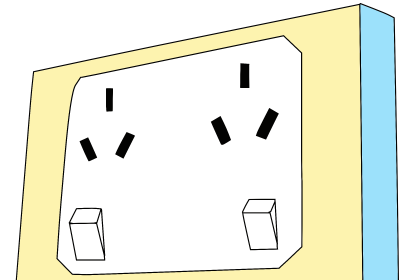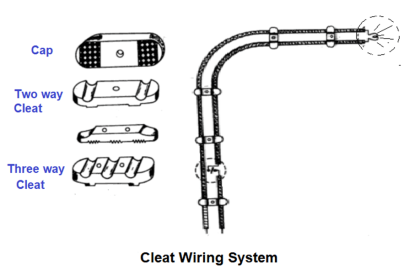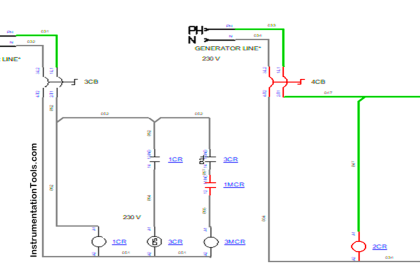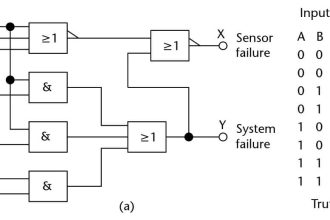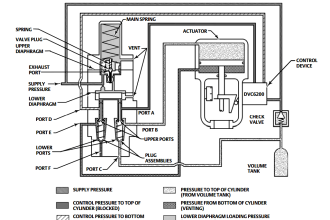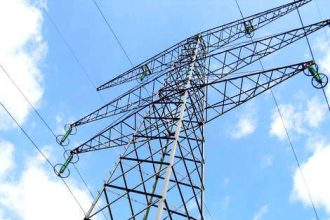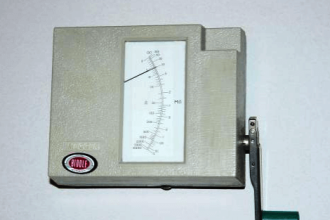A circuit breaker is used to protect the electrical circuit from any fault happening. It prevents the fault current from further reaching any load or metal body part or a person, and thus, any untoward incident or hazard does not happen.
The two most common reasons for a circuit breaker to trip in case of a fault are short circuits and ground faults. It is important for engineers to understand how these two exactly trip the breakers and eventually prevent the fault current from proceeding further. In this post, we will see how electrical short circuits and ground faults trip breakers.
How does an electrical circuit work?
Before understanding these two faults, let us understand basically how an electrical circuit works. The power supply has two terminals – positive and negative; the load too has the same two terminals. Current flows from the positive of supply to the positive of the load to the negative of the load to the negative of the supply. This completes the path of the current flow.
Because the load offers resistance, a nominal current below the maximum current will flow in the circuit (I=V/R according to Ohm’s law). In addition to this, a ground wire is connected to an earth pit in the circuit. If the current that we mentioned earlier exceeded than expected, the extra current will flow through this ground path safely into the earth pit. This will overall limit the current in the circuit. So, a normal electrical circuit works in this fashion.

How does a circuit breaker function?
A circuit breaker is installed in between the supply and load. Suppose the current we mentioned earlier is designed for a flow of 10 A maximum. In this case, a breaker will be installed with a rating of 15 A. So what is its use?
Suppose the current in the circuit exceeds 15 A; then the breaker will detect this overcurrent and immediately trip. This will prevent the current from further reaching the load. The operator has to bring the breaker back to normalcy manually. If the current is still high, then too it will trip immediately.
So as long as the current is not normal, the breaker will not allow fault current to flow in the circuit. In this way, a breaker protects the circuit from any fault current to be passed in the overall circuit.
How does a short current trip a circuit breaker?
As we saw, if the load offers resistance, the designed current flows in the path. But what if the positive and negative wires directly touch each other and bypass the load? In that case, no resistance or a very finite resistance would be offered. The current will exceed much higher according to Ohm’s law and the breaker will trip in this case. This condition is called a short circuit.
The short cirucit is an unintended path for a current to flow in the circuit, as they offer very minimal resistance. If a breaker is not there, then it would cause overheating, damage to the circuit, and even a fire. So, as soon as a short circuit is detected due to overcurrent, the breaker will trip if the current exceeds its maximum ratings.
How does a ground fault trip a breaker?
A ground fault is relatively trickier to understand and is a little more complex than a short circuit. In a short circuit condition where the positive and negative wires touch each other and bypass the load, if the positive live wire accidentally touches the ground wire or the metal body which is grounded, the current will bypass the load.
A very high current will flow similar to the short circuit condition, and trip the breaker if it exceeds the maximum ratings. This condition is called a ground fault. It is an unintended path for a current to flow in the circuit from a live point to a non-current carrying conductor, grounded conductor, or earth point, as they offer very minimal resistance.
But this is an effective path to trip the breaker. If the connection to the earth pit or breaker is broken, then this faulty current will remain in the circuit without reaching the neutral point. In that case, there are high chance of the metal body or earth circuit to become live. If someone touches the body now, then he would surely get an electrical shock as it is live now. In that case, the human body resistance adds a little, and the current will somehow remain below the trip rating of the breaker.
Such conditions are not an effective path to trip the breaker. So, a ground fault will trip the breaker if the path is unbroken and the current has been sensed properly by the breaker. For this reason (of ineffective paths), specialized breakers called ground fault circuit interrupters or GFCI are used. Refer to this article for more details – ELCB
In this way, we saw how electrical short circuits and ground faults trip breakers.
Read Next:
- Introduction to Protective Systems
- How to Locate Faults in Cables?
- High Voltage Circuit Breaker Principle
- Implement Motor Control Circuits
- Advantages of Oil Circuit Breakers

